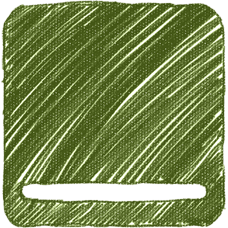Land and Planning

MLS Contents
- Phases
- Sectors
- Organising
- Land and Planning
- Tenure
- Services and Facilities
- Access
- Neighbourhood Development
- Housing
- Financing
Contents |
Key document
The key document used as background to this section is Town Planning Report: Managed Land Settlement (it's a 3.5 MB PDF document)
Additional plans etc. can be found under MLS plans
Bulk land
One of the fist things that is needed to start an incremental settlement project is to find land. If people have already invaded a pieces of land this land needs to be considered first and an upgrading of informal settlement process can be followed.
If this is not possible then new land will need to be found. This is one of the most challenging stages for many communities, as the good land is hard to find and is usually very expensive.
It helps if government already owns land that can be used. If state owned land cannot be found then consideration needs to be given to buying or expropriating private land.
The municipality or community group needs to either buy the land or obtain a land availability agreement on the land which allows them to purchase the land at a future date once various conditions (like approvals being granted to develop the land) are obtained.
You can find more information related to accessing bulk land at Accessing Bulk Land.
Bulk planning and environment
Whatever piece of land is found it is important to involve the municipality to make sure the development of the land falls within the municipality’s plans for the area.
The Municipal Spatial Development Plan is one such plan that is a requirement of the Spatial Planning and Land Use Management Act. (See SPLUMA for more information)
A broad plan needs to be developed for the piece of land which at least shows the outer boundary of the land that will be used for the incremental settlement.
Various studies are needed to determine the suitability of the land for development, and approvals are required from various government departments and agencies for the development to proceed. Examples of these include environmental impact assessments and township establishment processes that lead to zoning for incremental settlement.
Basic planning/ demarcation
Once the land is secured, the community and/or municipality can start to plan for what the plots will look like within this project area. The community can place more emphasis on creating nice public or common spaces that can be shared by all people in the area. This is a feature that often gets neglected in more conventional township layouts.
If households have been allocated to the land at this stage, these households can participate in deciding where the internal plots and roads should go. It is important that this is done in a way that makes it easy in future to upgrade the area, especially in relation to water and sewerage pipes and storm water.
The outer boundary of the broader development area or blocks will have to be surveyed by a professional land surveyor. In some instances, the community can be involved, with a little support, in marking out their own plots within this broader outer project boundary or block.
Diagnosis and planning
The process of continual improvement, is not just about blindly doing one step after the other, it is more about building on previous steps and continually finding ways to improve the way that things are done and what the environment looks like.
After the basic product development phase, role-players involved should stop, celebrate where appropriate, and reflect on what they have achieved; and draw lessons that can be incorporated into how they can proceed with the next aided self development phase.
In the same way, after making improvements to their house, the household should reflect on how effective these improvements have been and try and make even better improvements next time around.
This is like an ever expanding spiral where at each round of reflection, planning and implementation the overall situation improves from round to round. Over time the environments created become more complex and interconnected as each additional intervention feeds into and builds on previous interventions. This is how truly great neighbourhoods grow organically over time.
At the start of the process the community may have organised surveys to be conducted to determine household needs and circumstances. These surveys can be repeated to determine how household circumstances have changed, and to ask questions to determine what further interventions household and communities would like to make to improve their situation.
In conventional RDP type developments, the neighbourhood and houses are all planned and designed as one complete product. Any mistakes that are made are only picked up after the product has been completed, and there is limited opportunity to make adjustments and modifications as the services and houses are built. The incremental approach by contrast, provides many opportunities for interventions to be modified and tweaked as the process unfolds.
Once basic needs of tenure security and sanitation for example are met, households needs shift to other things like improving their own education, building safe and secure environments, and creating work for themselves or getting a job.
Additional information
You can find more information related to accessing bulk land at Accessing Bulk Land.
- Thought Piece: Basic planning and demarcation
- Thought Piece: Environmental legislation
- Thought piece: MLS and environment
- Overview of planning legislation
More still to come.
Comments
If you have any comments, questions, thoughts or suggestions for additional information please share them with us by using the comments page.
